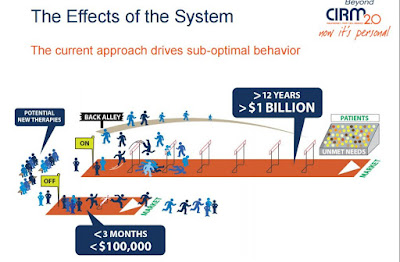The New York Times this morning took a crack at coverage of the first-ever study of the wave of dubious stem cell clinics in America. The headline on the Times' prominently displayed story said,
"Stem Cell Therapies Are Still Mostly Theory, Yet Clinics Are Flourishing"The starting point for the article by Gina Kolata was the study by UC Davis stem cell researcher Paul Knoepfler and bioethicist Leigh Turner of the University of Minnesota. They reported on June 30 that nearly 600 dubious stem cell clinics have sprung up around the country. It is the first study to document the reach of these businesses. The report, published in the scientific journal Cell Stem Cell, received heavy mainstream media coverage.
Kolata highlighted the tentative nature of stem cell research. She wrote,
"In theory, stem cells might be a useful treatment for certain diseases that involve the loss of cells, like Type 1 diabetes, Parkinson’s or osteoarthritis. They are primitive cells that can develop into a range of mature cells and perhaps serve as replacements. But progress is slow. After a flurry of stem cell excitement two decades ago, almost all the research today is still in mice or petri dishes. The very few clinical trials that have begun are still in the earliest phase.
"The problem is that stem cell therapies are still mostly theory. So what is going on? How can there be clinics, even chains of clinics run by companies, offering stem cell treatment for almost any disease you can think of — sports injuries, arthritis, autism, cerebral palsy, stroke, muscular dystrophy, A.L.S., cancer?"
She said that the Knoepfler-Turner study showed "what can happen when regulations fall behind."
And she noted the limits of federal regulation as well as the failure of state regulatory bodies to deal with the issue.
Kolata's story was displayed online this morning on the main page of the New York Times. The media attention to the work by Knoepfler and Turner has significantly raised the visibility of the issues involving dubious stem cell "therapies." A narrowly defined search on Google news this morning turned up nearly 11,000 citations, up from about 7,000 early this month.
The coverage certainly has increased the likelihood of some sort of additional regulatory action. However, such moves take time, and it is not realistic to expect a crackdown anytime soon. Indeed, it may require legislative changes at the federal and state levels.
As for the ethical and medical concerns raised by Knoepfler and Turner and the Times piece, one Times reader -- identified online only as Susan -- said,
"So what? A lot of what the scientific/medical establishment tries to sell us is just theory. Studies of this and studies of that. A study will come out and 6 months later another study will come out debunking the first study. I believe the problem is that some of these science/medical 'experts' are under the delusion that 'one size fits all.' I disagree. What may kill one person may help another."







